New York animation according to Signe Baumane and Bill Plympton
Picking the brain of two iconic independent animators about their curated Metrograph animation fest.
by Kambole Campbell
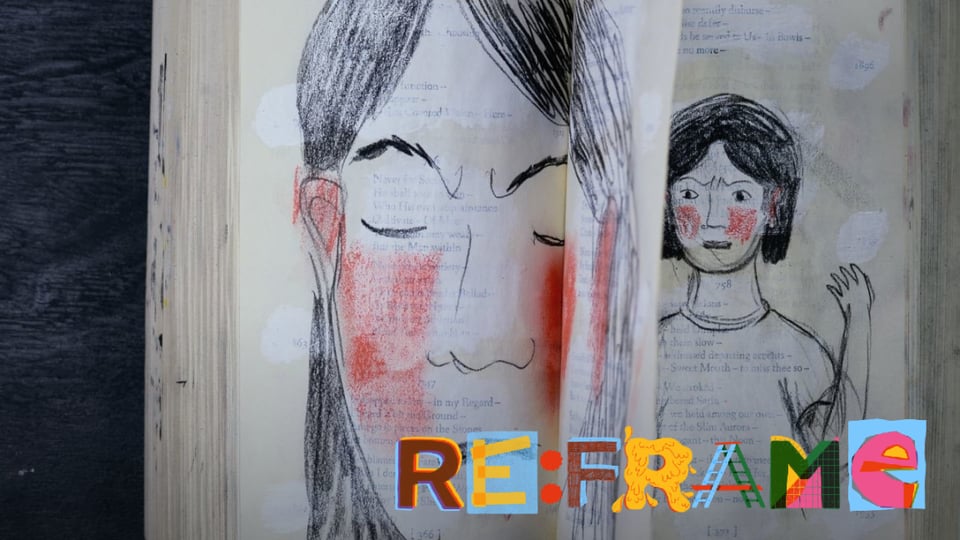
Though the printed result is here a lot later than we intended (life got in the way), we were lucky enough to speak to indie animation legends Signe Baumane and Bill Plympton. The two directors had curated a special screening at the Metrograph of independent, adult animated shorts made in (and often about) New York. For those who were unable to catch the screening in person, we have good news: the selection is still available via Metrograph's digital player.
At the time of the interview Baumane and Plympton were in their respective studios – Baumane gave an impromptu on-camera tour of her Brooklyn workspace (and introduced workers Julia, drawing shader Avery, and producer Sturgis Warner). "It's like when you exit the door, you're going into a world that you can't control. And I mean I can't control everything in my studio, that's for sure, but, you know, it's my world," Baumane reflects. "It's the sets we are making, it's the characters we're animating. As an animator, you're a control freak, and the world outside the studio walls is a little bit out of control at the moment."
The two gave their insights into the building of their animated selection, as well as reflecting on their intertwined careers and their perspective on shifts in the animation industry and building community around art.
What was the basis of the Metrograph curation?
Bill Plympton: It was actually a surprise to me how many animators in the New York area actually have either been nominated for an Oscar or won an Oscar. I mean, it was a lot, like 15 or something.
There were still some we didn't pursue, cause [the films] were so old [the directors] weren't around. But the quality of the films there [at the Metrograph screening] were really amazing, and the audience went nuts. They were so hyped up about that show, they would clap and laugh at any little bit of humor. Then I remember when I got up to do a little Q&A, I asked how many people here are animators or wannabe animators, and almost everybody raised their hand.
So it seems like animation is starting to come back in New York City after COVID. COVID really hit us hard, me too, actually. But now I think people are really in the groove, they really wanna do animation, and they want to make great films. That to me was a big takeaway from that screening.
It was really a love fest for animators.
Signe Baumane: From a programming point of view, me and Bill decided early on that it should focus on films that have been honored by the biggest possible award, either nominated for an Oscar or winning an Oscar. Then some films turned out to be too long: 15 minutes, 20 minute films are a little too long.
We just can't program the Oscar-winning half-hour long films and push out everybody else. But it's also because me and Bill have a personal preference for shorter, funnier films. We're not big lovers of tragedies because there's enough of that. So as Bill said, there is an amazing amount of films in New York that have been independently produced and have won or were nominated for Oscar, and then we also said that we want films that may not have been nominated for Oscar, but are about a relationship to New York.
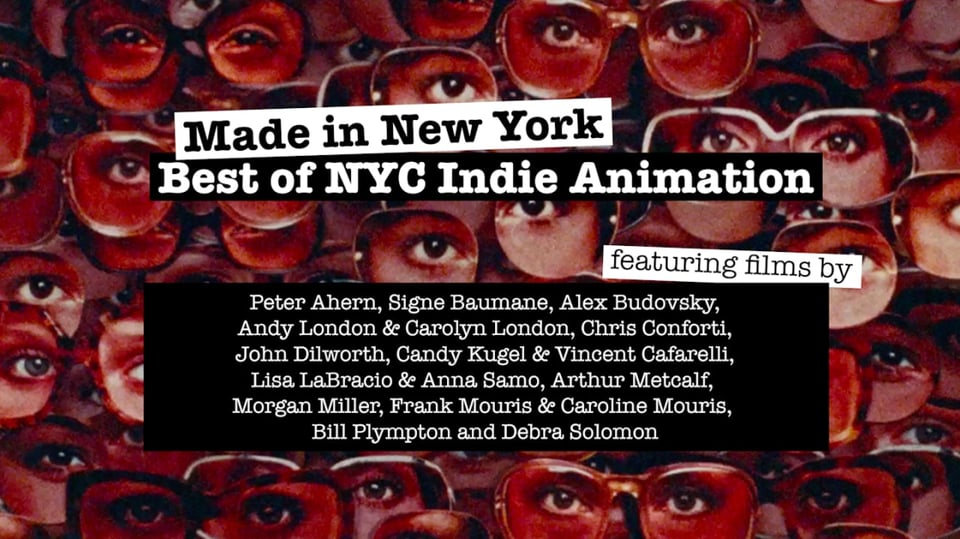
I can go over the program. [Signe holds up a sheet of paper with a number of cutout strips taped to it, all film titles arranged in a vertical column.] I put them in order in the beginning – this is my process, you see, I cut them out, put them in order. Me and Bill Plympton, we have been programming animation for a long, long, long time, starting in the early 2000s. We're friends, we collaborate really well.
Anyway, one thing early on that I discovered that I really like doing, is putting films together in a certain order. One [theme] is started by a film and then the next film continues on, pushes into another, then there is a climax, and then there is a good, happy end.
It's a very stressful process to program like that, but I really enjoy it, especially when I go to screenings and I hear people gasp at the juxtaposition of films. Very often, you can see the same film in a different program and there's no reaction, and then sometimes there is a very strong reaction because of the way they've been juxtaposed with each other. So that is how we put it together.
I imagine that you two have tastes which overlap and things that don't, and when, Signe, like you were saying, when you are very particular about the order and finding a rhythm to the program, how did you kind of work that out between you?
SB: Yeah, Bill, we disagree, right?
BP: Yeah, but at the early stages, we threw in as many films as we thought were available, so we had a large bunch of films that we wanted to consider. I think we agreed on a lot of the films, there's only a few of them that we didn't agree on, but I'll be honest with you, Signe did most of the work. Some people had moved out of the city so they're hard to find, so Signe did most of the real difficult work.
SB: I mean the difficult work of organizing and hoarding all these animators, that's a separate question. It is a collaborative process, and, as Bill said, we did have way too many films and then we had to weed them out. We argued about certain things like… I mean, I don't want to mention names.
BP: Go ahead!
SB: No… OK, well, there's [John] Hubley's films, right? They're Oscar nominated and Oscar winning films, but re-examining these films, I felt that they would slow [the presentation] down, and our 2025 audience will not stay with these films. They're created in a different era, and so we wanted not only to show honorable films, but we also wanted the audience to feel so engaged and enthralled with the program that when they hear there's another program of New York Animation, they would come back for more, right?
We wanted them to be very happy customers! And you know, there is a time and place for a Hubley film.
SB: I think that at some point we will keep organizing these screenings, then we will show the Hubley film, but at this particular program we just chose other films. And then Michael Sporn's film Doctor De Soto, and that was 15-to-20 minutes, plus it's for children and we were looking for adult-oriented work. Animation is the best for adults. I mean, I don't know, children love it for their reasons, but I think animation can express very adult content in a way that no other medium can.
Oh, we also wanted to have as many animators come for Q&A as possible, and so that meant that they had to be living animators!
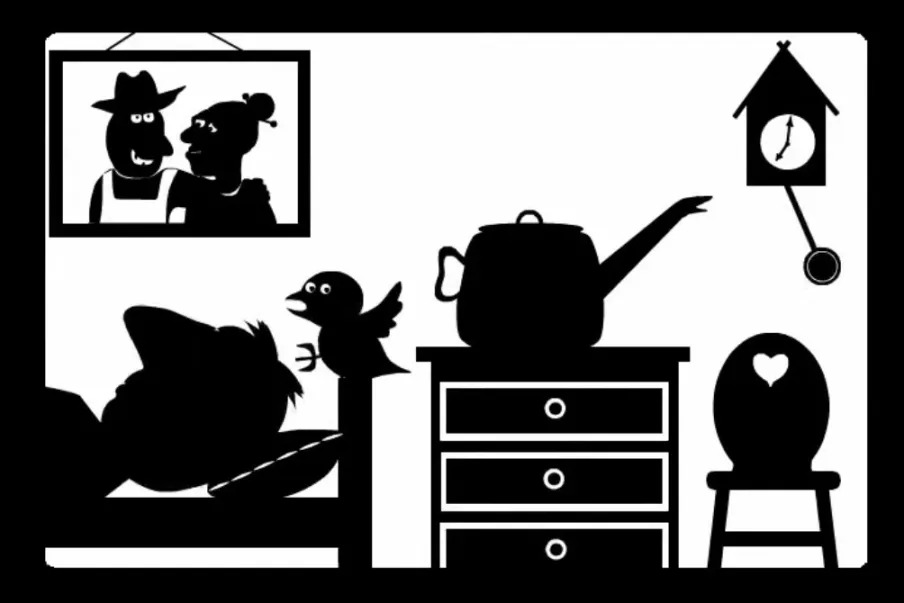
And so we actually had almost every film represented except for one. It was by Frank Mouris, he lives in upstate New York and he had issues with business; he had a deadline, so he couldn't come. But everybody else came, and it was like a family reunion and everybody was just feeling high and happy. And then we got to meet new people, new animators. There was a hangout afterwards, right, Bill?
BP: Yeah, we had a little party afterwards. Free drinks! And that's why we like the Metrograph.
There's a real feeling that you're in a good place, that they love independent filmmakers, and they really support independent filmmakers, so it was very pleasant. I didn't wanna leave! I wanted to stay all night and talk.
SB: Yeah, Metrograph is a special place. Every time I go there, I'm shocked that almost every screening is sold out, and that's a big hangout destination. People go there and it's like it feels like it's their home. It's a very comfortable place, as Bill said.
In the notes for the programme, Signe you mentioned that some of these works were defined by a sense of adventure and a quick-paced rhythm. Was that what you wanted to represent about New York animation in particular? Or was there something else about New York indie animation that you wanted to show off — to new audiences or younger people in the industry?
SB: It was a little bit random. We picked our favorites, and then for me, when I lined them all up, it was more kind of like throwing everything on the table and then organizing them. In the beginning when I was putting them in order, I was feeling nervous because I was thinking these are very different films from each other, so how I'm gonna have these thoughts coming through, but in the end, it made sense because this sense of timing is something that distinguishes New York animation from any other place that makes animation.
For example, there's Chris Conforti's Frog. It's a student academy winner, back in 2004. A long, long time ago now, and when you look at the film, there's nothing visually spectacular.
But what there is, is the sense of timing, it's just perfect. It's one thing after another, and then it all falls together and it's very satisfactory. I think that that is what distinguishes it from, let's say Canadian animation, you know, which is a slower paced, more deliberate, beautiful design, beautiful this, beautiful that. In New York, as you know, we have to make things fast and cheap. It's Bill Plympton's formula!
BP: That's right. It's called my dogma, Plympton's Dogma:short, cheap, and funny.
So I tell my students when I do a master class, I say try and make your film as much as you can by yourself, that'll make it inexpensive, make it cheap, and that's using your own work. And then make it funny, people will always buy a funny film. I don't care what it's about, if it's a funny film, people will buy it. So, a lot of people are starting to follow my rules now, and you're getting some really nice films.
Bill, Signe already mentioned that you two had been programming since the 2000s and I was wondering how you felt about the landscape of indie animation now, as compared to when you first started programming.
BP: Again, I think it was [COVID-19] that really put a lot of people out of business.
And so we're starting to emerge from that now and starting to build up new buyers, new places to show the films. For example, The Spike and Mike Festival is coming back. [NOTE: The Spike and Mike Festival was a week away at the time of recording]. That was a great theatrical venue for indie animated shorts, so I think that'll bring a little more fame for the creators and the whole genre.
One thing I did wanna mention is because it's kind of interesting. There were shows Signe and I put together which we started out doing for Kodak. They had saved one night for the month, and we put together a show of animated shorts, and that was a big success.
It had huge audiences, and people loved it. So then we did different shows like a collection of films that were rejected from Annecy, ones we thought were really good and deserved to be noticed. Then we did one where Signe chose her favorite female films about sex, and I chose my favorite male films about sex, and we argued over which ones were the best. It was all in good fun, of course, just to get people excited – we would put down the other's choice of film. We wanted to keep doing them, but unfortunately we have other projects to work on and we can't keep putting together these shows all the time.
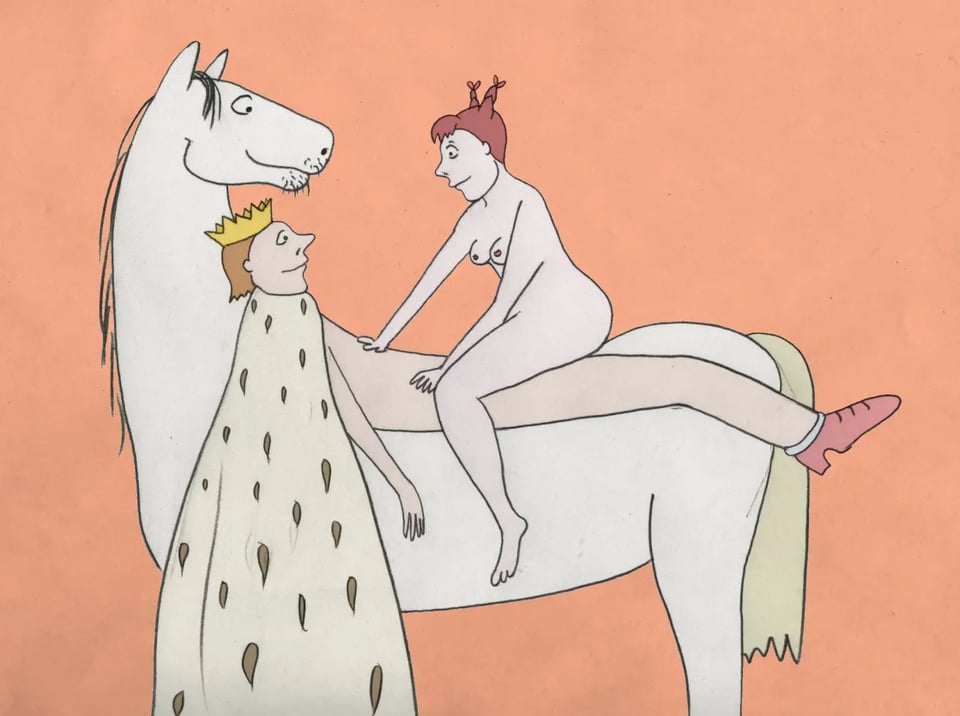
SB: Yeah, The Battle of The Sexes was probably our most engaging show. We were using really harsh words about each other's film selection. One thing that struck me was that in no time, Bill Plympton found one minute films about sex that were funny – from a man's point of view – But I had a hard time finding something shorter than 12 minutes. Apparently women don't make short sex films! I thought [my selection] was very sensual and very slow, and of course, when you show that to an audience which has gotten used to funny punchlines going on, I was like, "Well, we're gonna be losers."
We were really battling it out, we had a mad scientist and a girl who would walk around with a sign saying "applaud", and then the audience would applaud and the mad scientist would measure the level of applause. We did it in many countries. In the United States and everywhere except for one country, women won. Especially in Germany, the women filmmakers are underdogs, right, so everybody roots for an underdog. But the country where women lost, and the men were so gleefully applauding for male films and booing for female films, was Poland. It was in Warsaw just before the right-wing government took over, and I was like, "There's something deeply wrong with Poland."
Then a year later I was like, "Oh, I already knew that before it happened." The collective feeling of the reaction to our show made me feel that something was wrong here.
Given that this felt like a sign of where the wind was blowing, what do you see in the future of New York indie animation going off of the reactions to this screening?
BP: I was pleasantly surprised at the audience reaction to these films. They're pretty old, you know, a lot of them haven't been seen for a long time, and a lot of people are seeing them for the first time. To hear them applaud and laugh at everything was exciting for me, and it made me feel like it's gonna get a lot better.
The film schools, the animation schools are packed with young kids who want to be animators, and they don't wanna work for Pixar or Disney, they wanna make their own films, they wanna make their own ideas. I don't know how realistic that is, because as you know, it's a tough occupation to be an independent animator.
But it just shows the energy and the optimism that I see in the young students these days, and I think that the screening really proved it.
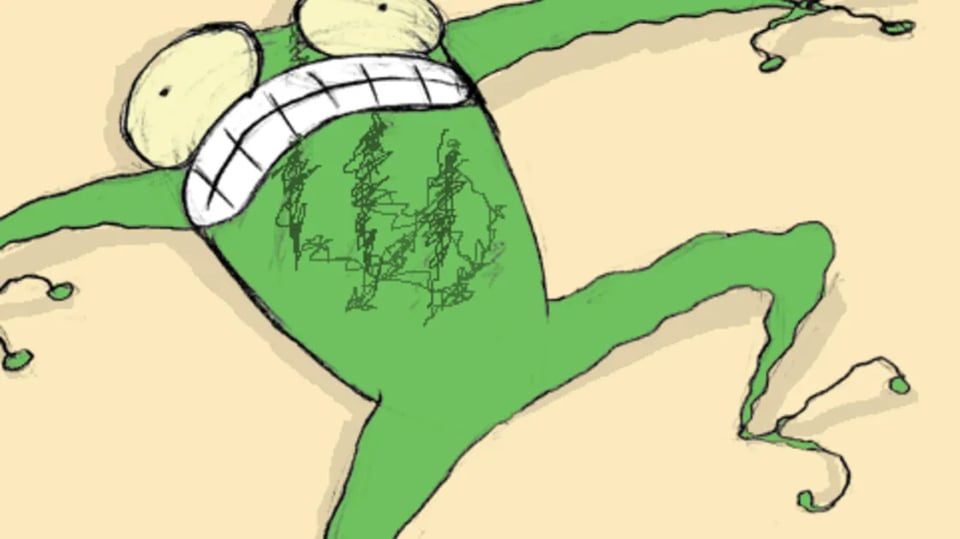
SB: Yeah, I probably agree with Bill that there is a sense of optimism because, unlike the old dogs like me and Bill, young people imagine that they have their whole life and their careers ahead of them. We're a little bit banged up because we already know how hard it is, but we are not here to stop anyone from growing their wings. New York and the independent animation community as a whole is great in the sense that we are like a small family where we encourage each other to make these independent films.
ASIFA East is the local animation society, and we go to a screening or an event with ASIFA East once a month. There you run into a person and buy a glass of beer and say, "so when is your next, independent film coming out?" And they're like, "oh, I don't know, I started something," and we'd ask "what's holding you back? Can I help you?" And it could be something like "After Effects is giving me a hard time," so I'm gonna come over and fix it for you, right?
There's an exchange of information of where the jobs are, where the money is, but also encouragement. You have to make your independent film or you die as a creator; you wither out. And then people feel… not ashamed, but kind of guilty or weird that another year has gone by and they don't have their own film. So there is a constant pressure from independent filmmakers. New York is probably the hardest place in the universe to be an independent filmmaker because the rent is so expensive, the food is so expensive, everything is just so taxing.
But at the same time, it's the best place to be an independent animator! Because New Yorkers by nature are opportunistic and entrepreneurial and independent and encouraging, and then there's the sense of community. A lot of people ask me why I make films in New York, that it would be so much easier if I moved somewhere cheaper like Detroit or in the suburbs or whatever.
Yeah, I am paying a lot, my rent is huge and it's horrible, but I get something here that I can get nowhere else. Not even in Europe! I say this because I know making films both ways, the European and American way. In Europe, you apply for these grants from the government, but you have to prove that it's a nice film, good for the public, because it's created on public funds.
Whereas in New York you're doing it on your free time, on your own money, and you can do whatever you want on whatever is on your sick mind, you just put it out. I had a film that I made in New York called Five Fucking Fables, no way I could have made that film in Europe.
They would be like, "Get out of here." Why would they give you public funds to make this shit!
BP: I think there's so much life in New York City animation. The streets are so crowded with people, they all look so different, it's like a live cartoon, all these crazy costumes and different languages, and I get so many ideas. I have my sketch pad which I carry around, and I write down these ideas, and that's where I got the Guard Dog idea, was the streets of New York.
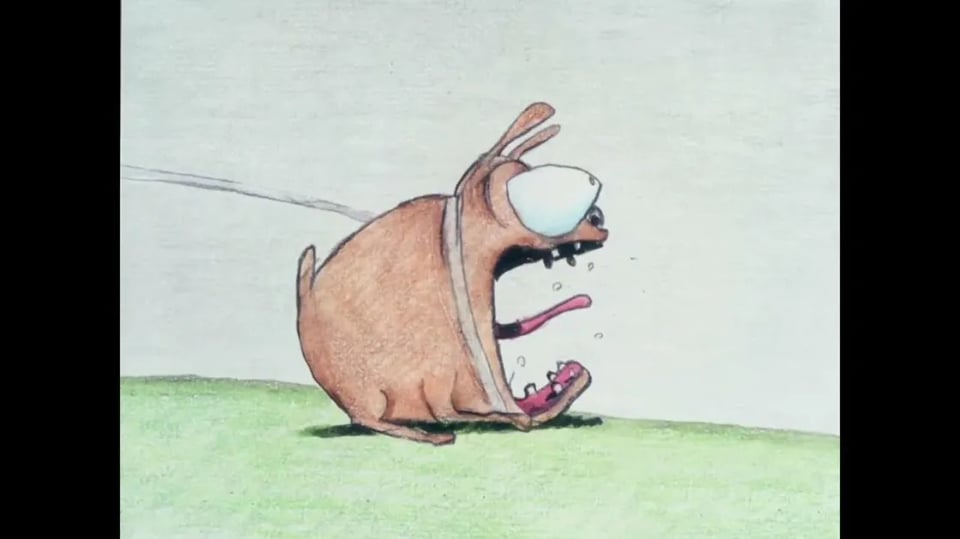
I think that inspires a lot of people, they have so many great ideas that they wanna turn into movies, animated cartoons, and that's why I remain here. Although I do like the restaurants and the culture here.
SB: Oh, I haven't been to a museum for like 20 years.
BP: How about the Museum of the Moving Image?
SB: Oh yeah, no, you're right. I have been to museums, but I guess it's not my favorite thing. I just love walking and people watching, or in the subway when I go from Brooklyn to Manhattan, there's so many little micro stories.
This sense of place being important to the curation is quite interesting to me, because one of the films that I saw on the list was, Bath Time in Clerkenwell – that's in London! Was it being chosen with a mind for New York as a global melting pot, or not just perspectives of the city from artists living there?
SB: So Bath Time in Clerkenwell, if you know the history of this film, was created by an immigrant from Russia, Alex Budowski, who arrived in the United States when he was 12 with his parents, and he lived in Brooklyn, not far from my studio. I forget the name, it will come to me if you want to know, but he was working as he graduated from Brooklyn College in film, and after he worked as an electrician for TV and film during the day, and then he would take an hour and a half commute back to his apartment, he arrived around 9 or 9:30pm, he would eat something, and at 10 o'clock, he would sit down and start working on this film, work till 4 o'clock, fall asleep, get up at 7, and go back to work.
And that was done in New York, and it was done in a program called Director, which was not meant to make animation. He didn't know anything about animation but he's a very voracious learner. I don't think someone in London would make a film like this, it's such a mad pace and full of creative ideas; One on top of another, and another, it's never-ending. I'm just saying that it doesn't matter that it was set in or about London, it's a very New York film.
Oh, I was thinking in terms of a global perspective, that it's a very 'New York' view of the rest of the world. When you see the phrase "New York City animation" you think that it's primarily about itself, but I quite appreciated that a lot of the films had a mind towards the global, like Beyond Noh.
SB: Yeah, and there are also a lot of personal films, like my film, Teat Beat of Sex, or, Everybody's Pregnant, there's just a variety of subjects and topics and attitudes.
How did it feel putting your own films in this context? What was it like to re-examine them amidst all these different films?
SB: Do you think me and Bill would go through the pain of organizing this event if we didn't put our films in? [Laughs]
I suppose not.
SB: [Laughs] To make it absolutely clear, Bill put my film in and I put Bill's film in, so we're clean here, right? I did not program my own film! Bill insisted. Right, Bill?
BP: Well, I had two films that I wanted to show, the other one is, Guard Dog, which was also nominated for an Oscar. So we decided that we would have a Volume 2. Maybe next year, cause there's a bunch of films that we did leave out that we just really didn't want to leave out.
I'll be showing my other film. I'm sure there's a whole bunch of films too that [Signe] can show.
SB: I mean, I'm not sure. I've been making feature films, so I don't really have time for shorts anymore. I'm not so insistent, it may also help objectivity in the programming, you know, but it's
BP: It's okay, we love your films.
SB: I guess I would put on Teat Beats again. I have like 15 of them. Or the most embarrassing film that I have ever made, Five Fucking Fables. Then one film that we did not include, unfortunately, was, Roof Sex by PES. His other film [Fresh Guacamole] was nominated for an Oscar.
We reached out to him but we just couldn't get through to him. He's busy in LA making commercials, but I thought it was spectacular to open. It's two chairs having sex on the roof, and it's a very New York film because who hasn't had sex on the roof in New York, right?
That is a wonderful opening film, it would melt everyone's minds and hearts, but we couldn't get through to him, so that we had to scrap that and we put some other film in there which worked really well, which is Arthur Metcalf's Bubble Wrap, which is a film about existential cruelty.

There was a question at the end, someone asked how does it feel to watch your own film after so many years, and Arthur said that he was really cringing! He actually called me and said, "can I take my film out and put another film in?" He said with everything that's going on in Ukraine and in Gaza, this film seems so unnecessary, violent and cruel, and [he didn't] want to increase this cruelty. I said no, if you take this film out and you don't want to show it, I'll find another, but I wanted this film and only this film. In a time of cruelty, it's good to look in the mirror, and see where the cruelty is coming from.
BP: One didn't choose, and I'm still a little mystified as to why it was, was Sunday in New York by Jimmy Picker. And this one won an Oscar! And what, he said he didn't have the rights to it or something? Signe, how come we didn't show that?
SB: Yeah, I don't know.
BP: He's a really neat guy, really great filmmaker, so we'll probably show it on volume 2.
It does sound like there's a lot of material for a Volume 2.
SB: Yeah. Can you ask Metrograph? [Laughs] Me personally, I believe that with all the rise of AI and the fear of AI is really doing weird stuff to our brains, right? That independent animation made by people with our own hands, with our own brains, with our single artistic vision, with no outside influence like big studio money or, considerations for censorship, we should rally around it. This is our last resort of human creativity, and what is human to me is to problem solve to be creative and make something that hasn't been there before. And if you say, "well, AI is gonna do this job," I'm just gonna go in and join the ranks of resistance, and I think that we should form this resistance early on.
I think that Metrograph and screenings of New York Independent animation could be a rallying call for this resistance to changing the world in this way. I don't think new things are bad, just that this thing isn't good for us.
Watch Baumane and Plympton's curated selection on the Metrograph's digital player: Link